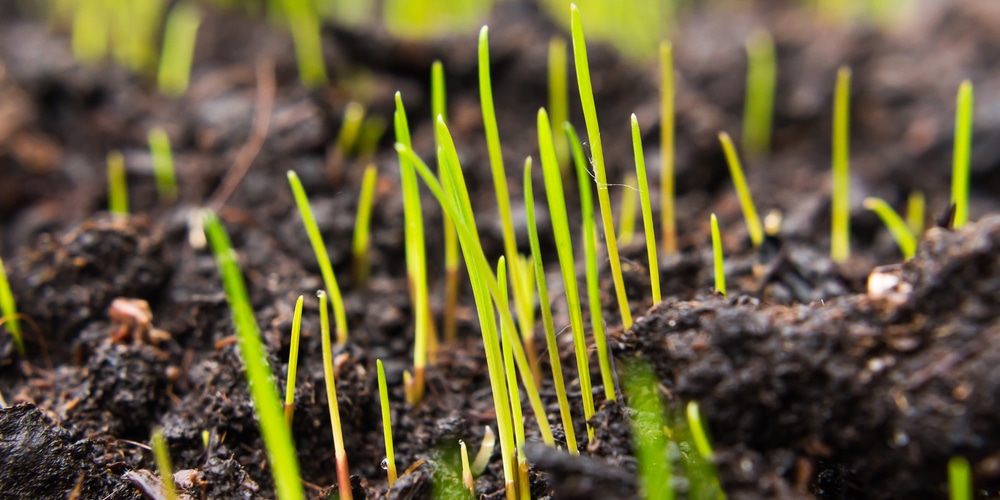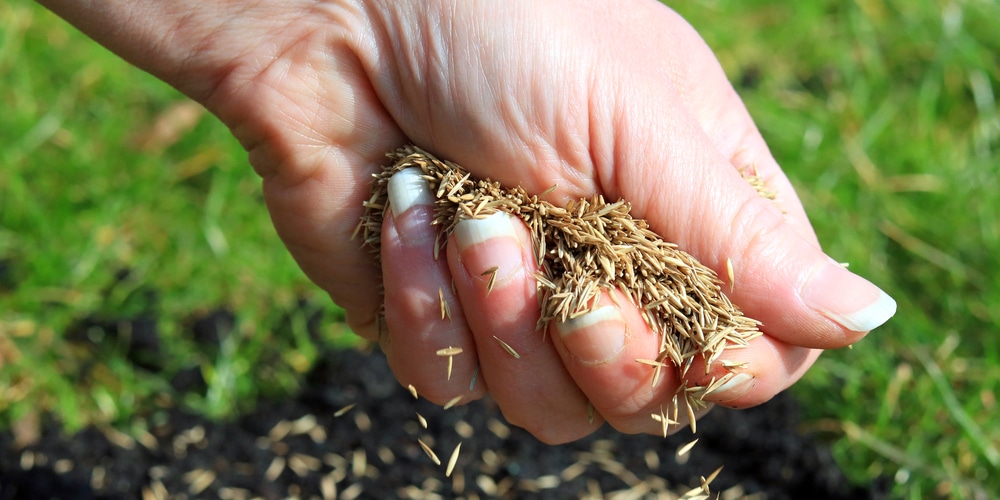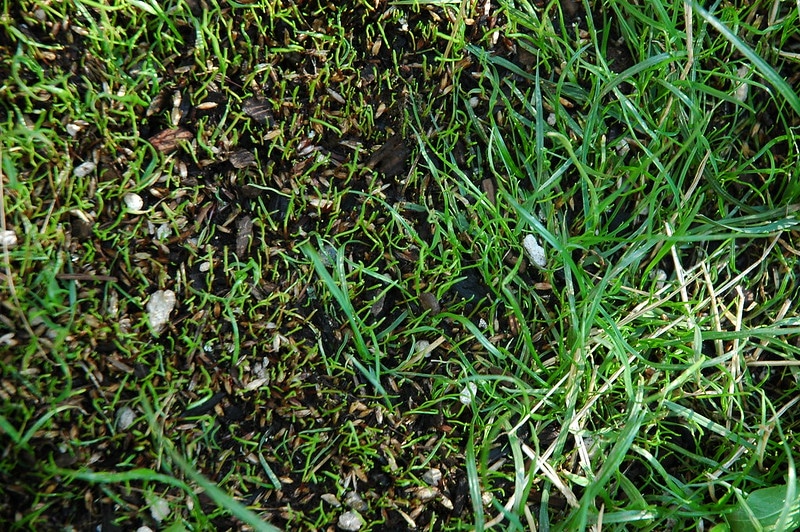Maintaining a beautiful lawn is no easy feat – it takes time, effort, and a lot of knowledge. While various practices can make or break your lawn (mowing, fertilizing, watering, etc.), one of the most important things to know is when NOT to do something.
Overseeding is a common practice that many newbie lawn owners make. While it may seem like a good idea, it can actually do more harm than good. Let’s find out why.
What is Overseeding?

Overseeding is the process of planting grass seed on top of existing turf. This means that you’ll plant grass seed into an existing lawn that already has grass growing.
Many people overseed their lawns in an effort to make their grass thicker, lusher, and healthier. Doing this isn’t generally a bad thing. It has been proven to be helpful in some instances where the lawn is struggling. Additionally, some people overseed their lawn in some cases where the grass is already patchy or thin.
However, overseeding too much can do more harm than good. It can lead to multiple problems down the road and can be detrimental to your lawn’s health.
The Dangers of Overseeding Too Much
Overseeding once in a while and with the right amount is generally an okay practice. Overseeding too much, however, can lead to a whole host of problems.
Some of the dangers of overseeding include:
Encourages Thatch Buildup
Thatch is a layer of dead and living grass, roots, and debris that accumulate at the base of your lawn. A small amount of thatch is actually good for your lawn – it acts as a protective barrier against heat, drought, and pests.
Too much thatch, however, can lead to problems. It can create an ideal environment for pests and diseases, and it can also prevent water, nutrients, and sunlight from reaching grass roots.
Weaken Your Grass
When you spread too much seed on your existing lawn, these new grasses will compete with nutrients, water, and sunlight. This means that your already existing turfgrass will be weaker and more susceptible to pests and diseases.
Overcrowds Your Lawn
Similar to the point above, when there’s too much grass in one area, they will compete for the same resources. This can lead to a weaker lawn overall. Grasses need enough space to grow and thrive, so overcrowding them will only lead to problems.
May Result in an Uneven Lawn
This is still somehow related to our point about overcrowding. When there are too many grasses in one area, they will start to crowd each other out. This means that your new and existing grass won’t evenly get the resources they need to grow.
As a result? Yes – an uneven lawn. Some areas will be patchy, but some areas will be too thick. This is a definite eyesore and can be difficult to fix.
How Much Grass Seed is Optimal?
Depending on the grass species, the ideal amount may vary. Check the back of your bag seed for recommended seeding rates. To do this, you also have to get an accurate measurement of your lawn. Knowing your lawn’s total square footage allows you to determine how much seed you actually need.
In general, a good rule of thumb is to sow about ½ pound of seed for every 1000 square feet. This is just an estimate – you may need more or less depending on the health of your lawn and the condition of your soil.
Additionally, investing in a lawn spreader is also a good idea. This will help you evenly distribute the seed and avoid overseeding.
Additionally, overseeding shouldn’t be done frequently. Once every two or three years may be enough to maintain a healthy, thick lawn. Anything more frequent than that, you may start to run into problems.
Can you overseed too much: Final Thoughts
Overseeding is a common lawn care practice many people do to help them achieve a beautiful lawn. While the right amount of grass seeds spread evenly across your lawn is generally okay, overseeding too much isn’t.
Remember to consider the amount of seed you’re using, grass variety, and the health of your lawn before you overseed. Also, avoid doing it too often – once every two to three years should suffice.
Related Article: When to Mow After Overseeding?

